-
EXECUTIVE SUMMARY
-
Market Overview
-
Key Findings
-
Market Segmentation
-
Competitive Landscape
-
Challenges and Opportunities
-
Future Outlook
-
MARKET INTRODUCTION
-
Definition
-
Scope of the study
- Research Objective
- Assumption
- Limitations
-
RESEARCH METHODOLOGY
-
Overview
-
Data Mining
-
Secondary Research
-
Primary Research
- Primary Interviews and Information Gathering Process
- Breakdown of Primary Respondents
-
Forecasting Model
-
Market Size Estimation
- Bottom-Up Approach
- Top-Down Approach
-
Data Triangulation
-
Validation
-
MARKET DYNAMICS
-
Overview
-
Drivers
-
Restraints
-
Opportunities
-
MARKET FACTOR ANALYSIS
-
Value chain Analysis
-
Porter's Five Forces Analysis
- Bargaining Power of Suppliers
- Bargaining Power of Buyers
- Threat of New Entrants
- Threat of Substitutes
- Intensity of Rivalry
-
COVID-19 Impact Analysis
- Market Impact Analysis
- Regional Impact
- Opportunity and Threat Analysis
-
ENHANCED OIL RECOVERY MARKET, BY TECHNOLOGY (USD BILLION)
-
Gas Injection
-
Thermal Recovery
-
Chemical Injection
-
Microbial Enhanced Oil Recovery
-
Combined Cycle Recovery
-
ENHANCED OIL RECOVERY MARKET, BY APPLICATION (USD BILLION)
-
Onshore
-
Offshore
-
Brownfield
-
Greenfield
-
ENHANCED OIL RECOVERY MARKET, BY TECHNIQUE (USD BILLION)
-
Water Flooding
-
Polymer Flooding
-
In-Situ Combustion
-
Steam Injection
-
ENHANCED OIL RECOVERY MARKET, BY END USE (USD BILLION)
-
Oil Gas Industry
-
Energy Sector
-
Petrochemical Industry
-
ENHANCED OIL RECOVERY MARKET, BY REGIONAL (USD BILLION)
-
North America
- US
- Canada
-
Europe
- Germany
- UK
- France
- Russia
- Italy
- Spain
- Rest of Europe
-
APAC
- China
- India
- Japan
- South Korea
- Malaysia
- Thailand
- Indonesia
- Rest of APAC
-
South America
- Brazil
- Mexico
- Argentina
- Rest of South America
-
MEA
- GCC Countries
- South Africa
- Rest of MEA
-
COMPETITIVE LANDSCAPE
-
Overview
-
Competitive Analysis
-
Market share Analysis
-
Major Growth Strategy in the Enhanced Oil Recovery Market
-
Competitive Benchmarking
-
Leading Players in Terms of Number of Developments in the Enhanced Oil Recovery Market
-
Key developments and growth strategies
- New Product Launch/Service Deployment
- Merger Acquisitions
- Joint Ventures
-
Major Players Financial Matrix
- Sales and Operating Income
- Major Players RD Expenditure. 2023
-
COMPANY PROFILES
-
ExxonMobil
- Financial Overview
- Products Offered
- Key Developments
- SWOT Analysis
- Key Strategies
-
EOG Resources
- Financial Overview
- Products Offered
- Key Developments
- SWOT Analysis
- Key Strategies
-
Eni
- Financial Overview
- Products Offered
- Key Developments
- SWOT Analysis
- Key Strategies
-
TotalEnergies
- Financial Overview
- Products Offered
- Key Developments
- SWOT Analysis
- Key Strategies
-
Chevron
- Financial Overview
- Products Offered
- Key Developments
- SWOT Analysis
- Key Strategies
-
BP
- Financial Overview
- Products Offered
- Key Developments
- SWOT Analysis
- Key Strategies
-
Petrobras
- Financial Overview
- Products Offered
- Key Developments
- SWOT Analysis
- Key Strategies
-
Halliburton
- Financial Overview
- Products Offered
- Key Developments
- SWOT Analysis
- Key Strategies
-
SABIC
- Financial Overview
- Products Offered
- Key Developments
- SWOT Analysis
- Key Strategies
-
Schlumberger
- Financial Overview
- Products Offered
- Key Developments
- SWOT Analysis
- Key Strategies
-
Weatherford International
- Financial Overview
- Products Offered
- Key Developments
- SWOT Analysis
- Key Strategies
-
Royal Dutch Shell
- Financial Overview
- Products Offered
- Key Developments
- SWOT Analysis
- Key Strategies
-
Occidental Petroleum
- Financial Overview
- Products Offered
- Key Developments
- SWOT Analysis
- Key Strategies
-
ConocoPhillips
- Financial Overview
- Products Offered
- Key Developments
- SWOT Analysis
- Key Strategies
-
Baker Hughes
- Financial Overview
- Products Offered
- Key Developments
- SWOT Analysis
- Key Strategies
-
APPENDIX
-
References
-
Related Reports
-
LIST OF TABLES
-
LIST OF ASSUMPTIONS
-
NORTH AMERICA ENHANCED OIL RECOVERY MARKET SIZE ESTIMATES & FORECAST, BY TECHNOLOGY, 2019-2032 (USD BILLIONS)
-
NORTH AMERICA ENHANCED OIL RECOVERY MARKET SIZE ESTIMATES & FORECAST, BY APPLICATION, 2019-2032 (USD BILLIONS)
-
NORTH AMERICA ENHANCED OIL RECOVERY MARKET SIZE ESTIMATES & FORECAST, BY TECHNIQUE, 2019-2032 (USD BILLIONS)
-
NORTH AMERICA ENHANCED OIL RECOVERY MARKET SIZE ESTIMATES & FORECAST, BY END USE, 2019-2032 (USD BILLIONS)
-
NORTH AMERICA ENHANCED OIL RECOVERY MARKET SIZE ESTIMATES & FORECAST, BY REGIONAL, 2019-2032 (USD BILLIONS)
-
US ENHANCED OIL RECOVERY MARKET SIZE ESTIMATES & FORECAST, BY TECHNOLOGY, 2019-2032 (USD BILLIONS)
-
US ENHANCED OIL RECOVERY MARKET SIZE ESTIMATES & FORECAST, BY APPLICATION, 2019-2032 (USD BILLIONS)
-
US ENHANCED OIL RECOVERY MARKET SIZE ESTIMATES & FORECAST, BY TECHNIQUE, 2019-2032 (USD BILLIONS)
-
US ENHANCED OIL RECOVERY MARKET SIZE ESTIMATES & FORECAST, BY END USE, 2019-2032 (USD BILLIONS)
-
US ENHANCED OIL RECOVERY MARKET SIZE ESTIMATES & FORECAST, BY REGIONAL, 2019-2032 (USD BILLIONS)
-
CANADA ENHANCED OIL RECOVERY MARKET SIZE ESTIMATES & FORECAST, BY TECHNOLOGY, 2019-2032 (USD BILLIONS)
-
CANADA ENHANCED OIL RECOVERY MARKET SIZE ESTIMATES & FORECAST, BY APPLICATION, 2019-2032 (USD BILLIONS)
-
CANADA ENHANCED OIL RECOVERY MARKET SIZE ESTIMATES & FORECAST, BY TECHNIQUE, 2019-2032 (USD BILLIONS)
-
CANADA ENHANCED OIL RECOVERY MARKET SIZE ESTIMATES & FORECAST, BY END USE, 2019-2032 (USD BILLIONS)
-
CANADA ENHANCED OIL RECOVERY MARKET SIZE ESTIMATES & FORECAST, BY REGIONAL, 2019-2032 (USD BILLIONS)
-
EUROPE ENHANCED OIL RECOVERY MARKET SIZE ESTIMATES & FORECAST, BY TECHNOLOGY, 2019-2032 (USD BILLIONS)
-
EUROPE ENHANCED OIL RECOVERY MARKET SIZE ESTIMATES & FORECAST, BY APPLICATION, 2019-2032 (USD BILLIONS)
-
EUROPE ENHANCED OIL RECOVERY MARKET SIZE ESTIMATES & FORECAST, BY TECHNIQUE, 2019-2032 (USD BILLIONS)
-
EUROPE ENHANCED OIL RECOVERY MARKET SIZE ESTIMATES & FORECAST, BY END USE, 2019-2032 (USD BILLIONS)
-
EUROPE ENHANCED OIL RECOVERY MARKET SIZE ESTIMATES & FORECAST, BY REGIONAL, 2019-2032 (USD BILLIONS)
-
GERMANY ENHANCED OIL RECOVERY MARKET SIZE ESTIMATES & FORECAST, BY TECHNOLOGY, 2019-2032 (USD BILLIONS)
-
GERMANY ENHANCED OIL RECOVERY MARKET SIZE ESTIMATES & FORECAST, BY APPLICATION, 2019-2032 (USD BILLIONS)
-
GERMANY ENHANCED OIL RECOVERY MARKET SIZE ESTIMATES & FORECAST, BY TECHNIQUE, 2019-2032 (USD BILLIONS)
-
GERMANY ENHANCED OIL RECOVERY MARKET SIZE ESTIMATES & FORECAST, BY END USE, 2019-2032 (USD BILLIONS)
-
GERMANY ENHANCED OIL RECOVERY MARKET SIZE ESTIMATES & FORECAST, BY REGIONAL, 2019-2032 (USD BILLIONS)
-
UK ENHANCED OIL RECOVERY MARKET SIZE ESTIMATES & FORECAST, BY TECHNOLOGY, 2019-2032 (USD BILLIONS)
-
UK ENHANCED OIL RECOVERY MARKET SIZE ESTIMATES & FORECAST, BY APPLICATION, 2019-2032 (USD BILLIONS)
-
UK ENHANCED OIL RECOVERY MARKET SIZE ESTIMATES & FORECAST, BY TECHNIQUE, 2019-2032 (USD BILLIONS)
-
UK ENHANCED OIL RECOVERY MARKET SIZE ESTIMATES & FORECAST, BY END USE, 2019-2032 (USD BILLIONS)
-
UK ENHANCED OIL RECOVERY MARKET SIZE ESTIMATES & FORECAST, BY REGIONAL, 2019-2032 (USD BILLIONS)
-
FRANCE ENHANCED OIL RECOVERY MARKET SIZE ESTIMATES & FORECAST, BY TECHNOLOGY, 2019-2032 (USD BILLIONS)
-
FRANCE ENHANCED OIL RECOVERY MARKET SIZE ESTIMATES & FORECAST, BY APPLICATION, 2019-2032 (USD BILLIONS)
-
FRANCE ENHANCED OIL RECOVERY MARKET SIZE ESTIMATES & FORECAST, BY TECHNIQUE, 2019-2032 (USD BILLIONS)
-
FRANCE ENHANCED OIL RECOVERY MARKET SIZE ESTIMATES & FORECAST, BY END USE, 2019-2032 (USD BILLIONS)
-
FRANCE ENHANCED OIL RECOVERY MARKET SIZE ESTIMATES & FORECAST, BY REGIONAL, 2019-2032 (USD BILLIONS)
-
RUSSIA ENHANCED OIL RECOVERY MARKET SIZE ESTIMATES & FORECAST, BY TECHNOLOGY, 2019-2032 (USD BILLIONS)
-
RUSSIA ENHANCED OIL RECOVERY MARKET SIZE ESTIMATES & FORECAST, BY APPLICATION, 2019-2032 (USD BILLIONS)
-
RUSSIA ENHANCED OIL RECOVERY MARKET SIZE ESTIMATES & FORECAST, BY TECHNIQUE, 2019-2032 (USD BILLIONS)
-
RUSSIA ENHANCED OIL RECOVERY MARKET SIZE ESTIMATES & FORECAST, BY END USE, 2019-2032 (USD BILLIONS)
-
RUSSIA ENHANCED OIL RECOVERY MARKET SIZE ESTIMATES & FORECAST, BY REGIONAL, 2019-2032 (USD BILLIONS)
-
ITALY ENHANCED OIL RECOVERY MARKET SIZE ESTIMATES & FORECAST, BY TECHNOLOGY, 2019-2032 (USD BILLIONS)
-
ITALY ENHANCED OIL RECOVERY MARKET SIZE ESTIMATES & FORECAST, BY APPLICATION, 2019-2032 (USD BILLIONS)
-
ITALY ENHANCED OIL RECOVERY MARKET SIZE ESTIMATES & FORECAST, BY TECHNIQUE, 2019-2032 (USD BILLIONS)
-
ITALY ENHANCED OIL RECOVERY MARKET SIZE ESTIMATES & FORECAST, BY END USE, 2019-2032 (USD BILLIONS)
-
ITALY ENHANCED OIL RECOVERY MARKET SIZE ESTIMATES & FORECAST, BY REGIONAL, 2019-2032 (USD BILLIONS)
-
SPAIN ENHANCED OIL RECOVERY MARKET SIZE ESTIMATES & FORECAST, BY TECHNOLOGY, 2019-2032 (USD BILLIONS)
-
SPAIN ENHANCED OIL RECOVERY MARKET SIZE ESTIMATES & FORECAST, BY APPLICATION, 2019-2032 (USD BILLIONS)
-
SPAIN ENHANCED OIL RECOVERY MARKET SIZE ESTIMATES & FORECAST, BY TECHNIQUE, 2019-2032 (USD BILLIONS)
-
SPAIN ENHANCED OIL RECOVERY MARKET SIZE ESTIMATES & FORECAST, BY END USE, 2019-2032 (USD BILLIONS)
-
SPAIN ENHANCED OIL RECOVERY MARKET SIZE ESTIMATES & FORECAST, BY REGIONAL, 2019-2032 (USD BILLIONS)
-
REST OF EUROPE ENHANCED OIL RECOVERY MARKET SIZE ESTIMATES & FORECAST, BY TECHNOLOGY, 2019-2032 (USD BILLIONS)
-
REST OF EUROPE ENHANCED OIL RECOVERY MARKET SIZE ESTIMATES & FORECAST, BY APPLICATION, 2019-2032 (USD BILLIONS)
-
REST OF EUROPE ENHANCED OIL RECOVERY MARKET SIZE ESTIMATES & FORECAST, BY TECHNIQUE, 2019-2032 (USD BILLIONS)
-
REST OF EUROPE ENHANCED OIL RECOVERY MARKET SIZE ESTIMATES & FORECAST, BY END USE, 2019-2032 (USD BILLIONS)
-
REST OF EUROPE ENHANCED OIL RECOVERY MARKET SIZE ESTIMATES & FORECAST, BY REGIONAL, 2019-2032 (USD BILLIONS)
-
APAC ENHANCED OIL RECOVERY MARKET SIZE ESTIMATES & FORECAST, BY TECHNOLOGY, 2019-2032 (USD BILLIONS)
-
APAC ENHANCED OIL RECOVERY MARKET SIZE ESTIMATES & FORECAST, BY APPLICATION, 2019-2032 (USD BILLIONS)
-
APAC ENHANCED OIL RECOVERY MARKET SIZE ESTIMATES & FORECAST, BY TECHNIQUE, 2019-2032 (USD BILLIONS)
-
APAC ENHANCED OIL RECOVERY MARKET SIZE ESTIMATES & FORECAST, BY END USE, 2019-2032 (USD BILLIONS)
-
APAC ENHANCED OIL RECOVERY MARKET SIZE ESTIMATES & FORECAST, BY REGIONAL, 2019-2032 (USD BILLIONS)
-
CHINA ENHANCED OIL RECOVERY MARKET SIZE ESTIMATES & FORECAST, BY TECHNOLOGY, 2019-2032 (USD BILLIONS)
-
CHINA ENHANCED OIL RECOVERY MARKET SIZE ESTIMATES & FORECAST, BY APPLICATION, 2019-2032 (USD BILLIONS)
-
CHINA ENHANCED OIL RECOVERY MARKET SIZE ESTIMATES & FORECAST, BY TECHNIQUE, 2019-2032 (USD BILLIONS)
-
CHINA ENHANCED OIL RECOVERY MARKET SIZE ESTIMATES & FORECAST, BY END USE, 2019-2032 (USD BILLIONS)
-
CHINA ENHANCED OIL RECOVERY MARKET SIZE ESTIMATES & FORECAST, BY REGIONAL, 2019-2032 (USD BILLIONS)
-
INDIA ENHANCED OIL RECOVERY MARKET SIZE ESTIMATES & FORECAST, BY TECHNOLOGY, 2019-2032 (USD BILLIONS)
-
INDIA ENHANCED OIL RECOVERY MARKET SIZE ESTIMATES & FORECAST, BY APPLICATION, 2019-2032 (USD BILLIONS)
-
INDIA ENHANCED OIL RECOVERY MARKET SIZE ESTIMATES & FORECAST, BY TECHNIQUE, 2019-2032 (USD BILLIONS)
-
INDIA ENHANCED OIL RECOVERY MARKET SIZE ESTIMATES & FORECAST, BY END USE, 2019-2032 (USD BILLIONS)
-
INDIA ENHANCED OIL RECOVERY MARKET SIZE ESTIMATES & FORECAST, BY REGIONAL, 2019-2032 (USD BILLIONS)
-
JAPAN ENHANCED OIL RECOVERY MARKET SIZE ESTIMATES & FORECAST, BY TECHNOLOGY, 2019-2032 (USD BILLIONS)
-
JAPAN ENHANCED OIL RECOVERY MARKET SIZE ESTIMATES & FORECAST, BY APPLICATION, 2019-2032 (USD BILLIONS)
-
JAPAN ENHANCED OIL RECOVERY MARKET SIZE ESTIMATES & FORECAST, BY TECHNIQUE, 2019-2032 (USD BILLIONS)
-
JAPAN ENHANCED OIL RECOVERY MARKET SIZE ESTIMATES & FORECAST, BY END USE, 2019-2032 (USD BILLIONS)
-
JAPAN ENHANCED OIL RECOVERY MARKET SIZE ESTIMATES & FORECAST, BY REGIONAL, 2019-2032 (USD BILLIONS)
-
SOUTH KOREA ENHANCED OIL RECOVERY MARKET SIZE ESTIMATES & FORECAST, BY TECHNOLOGY, 2019-2032 (USD BILLIONS)
-
SOUTH KOREA ENHANCED OIL RECOVERY MARKET SIZE ESTIMATES & FORECAST, BY APPLICATION, 2019-2032 (USD BILLIONS)
-
SOUTH KOREA ENHANCED OIL RECOVERY MARKET SIZE ESTIMATES & FORECAST, BY TECHNIQUE, 2019-2032 (USD BILLIONS)
-
SOUTH KOREA ENHANCED OIL RECOVERY MARKET SIZE ESTIMATES & FORECAST, BY END USE, 2019-2032 (USD BILLIONS)
-
SOUTH KOREA ENHANCED OIL RECOVERY MARKET SIZE ESTIMATES & FORECAST, BY REGIONAL, 2019-2032 (USD BILLIONS)
-
MALAYSIA ENHANCED OIL RECOVERY MARKET SIZE ESTIMATES & FORECAST, BY TECHNOLOGY, 2019-2032 (USD BILLIONS)
-
MALAYSIA ENHANCED OIL RECOVERY MARKET SIZE ESTIMATES & FORECAST, BY APPLICATION, 2019-2032 (USD BILLIONS)
-
MALAYSIA ENHANCED OIL RECOVERY MARKET SIZE ESTIMATES & FORECAST, BY TECHNIQUE, 2019-2032 (USD BILLIONS)
-
MALAYSIA ENHANCED OIL RECOVERY MARKET SIZE ESTIMATES & FORECAST, BY END USE, 2019-2032 (USD BILLIONS)
-
MALAYSIA ENHANCED OIL RECOVERY MARKET SIZE ESTIMATES & FORECAST, BY REGIONAL, 2019-2032 (USD BILLIONS)
-
THAILAND ENHANCED OIL RECOVERY MARKET SIZE ESTIMATES & FORECAST, BY TECHNOLOGY, 2019-2032 (USD BILLIONS)
-
THAILAND ENHANCED OIL RECOVERY MARKET SIZE ESTIMATES & FORECAST, BY APPLICATION, 2019-2032 (USD BILLIONS)
-
THAILAND ENHANCED OIL RECOVERY MARKET SIZE ESTIMATES & FORECAST, BY TECHNIQUE, 2019-2032 (USD BILLIONS)
-
THAILAND ENHANCED OIL RECOVERY MARKET SIZE ESTIMATES & FORECAST, BY END USE, 2019-2032 (USD BILLIONS)
-
THAILAND ENHANCED OIL RECOVERY MARKET SIZE ESTIMATES & FORECAST, BY REGIONAL, 2019-2032 (USD BILLIONS)
-
INDONESIA ENHANCED OIL RECOVERY MARKET SIZE ESTIMATES & FORECAST, BY TECHNOLOGY, 2019-2032 (USD BILLIONS)
-
INDONESIA ENHANCED OIL RECOVERY MARKET SIZE ESTIMATES & FORECAST, BY APPLICATION, 2019-2032 (USD BILLIONS)
-
INDONESIA ENHANCED OIL RECOVERY MARKET SIZE ESTIMATES & FORECAST, BY TECHNIQUE, 2019-2032 (USD BILLIONS)
-
INDONESIA ENHANCED OIL RECOVERY MARKET SIZE ESTIMATES & FORECAST, BY END USE, 2019-2032 (USD BILLIONS)
-
INDONESIA ENHANCED OIL RECOVERY MARKET SIZE ESTIMATES & FORECAST, BY REGIONAL, 2019-2032 (USD BILLIONS)
-
REST OF APAC ENHANCED OIL RECOVERY MARKET SIZE ESTIMATES & FORECAST, BY TECHNOLOGY, 2019-2032 (USD BILLIONS)
-
REST OF APAC ENHANCED OIL RECOVERY MARKET SIZE ESTIMATES & FORECAST, BY APPLICATION, 2019-2032 (USD BILLIONS)
-
REST OF APAC ENHANCED OIL RECOVERY MARKET SIZE ESTIMATES & FORECAST, BY TECHNIQUE, 2019-2032 (USD BILLIONS)
-
REST OF APAC ENHANCED OIL RECOVERY MARKET SIZE ESTIMATES & FORECAST, BY END USE, 2019-2032 (USD BILLIONS)
-
REST OF APAC ENHANCED OIL RECOVERY MARKET SIZE ESTIMATES & FORECAST, BY REGIONAL, 2019-2032 (USD BILLIONS)
-
SOUTH AMERICA ENHANCED OIL RECOVERY MARKET SIZE ESTIMATES & FORECAST, BY TECHNOLOGY, 2019-2032 (USD BILLIONS)
-
SOUTH AMERICA ENHANCED OIL RECOVERY MARKET SIZE ESTIMATES & FORECAST, BY APPLICATION, 2019-2032 (USD BILLIONS)
-
SOUTH AMERICA ENHANCED OIL RECOVERY MARKET SIZE ESTIMATES & FORECAST, BY TECHNIQUE, 2019-2032 (USD BILLIONS)
-
SOUTH AMERICA ENHANCED OIL RECOVERY MARKET SIZE ESTIMATES & FORECAST, BY END USE, 2019-2032 (USD BILLIONS)
-
SOUTH AMERICA ENHANCED OIL RECOVERY MARKET SIZE ESTIMATES & FORECAST, BY REGIONAL, 2019-2032 (USD BILLIONS)
-
BRAZIL ENHANCED OIL RECOVERY MARKET SIZE ESTIMATES & FORECAST, BY TECHNOLOGY, 2019-2032 (USD BILLIONS)
-
BRAZIL ENHANCED OIL RECOVERY MARKET SIZE ESTIMATES & FORECAST, BY APPLICATION, 2019-2032 (USD BILLIONS)
-
BRAZIL ENHANCED OIL RECOVERY MARKET SIZE ESTIMATES & FORECAST, BY TECHNIQUE, 2019-2032 (USD BILLIONS)
-
BRAZIL ENHANCED OIL RECOVERY MARKET SIZE ESTIMATES & FORECAST, BY END USE, 2019-2032 (USD BILLIONS)
-
BRAZIL ENHANCED OIL RECOVERY MARKET SIZE ESTIMATES & FORECAST, BY REGIONAL, 2019-2032 (USD BILLIONS)
-
MEXICO ENHANCED OIL RECOVERY MARKET SIZE ESTIMATES & FORECAST, BY TECHNOLOGY, 2019-2032 (USD BILLIONS)
-
MEXICO ENHANCED OIL RECOVERY MARKET SIZE ESTIMATES & FORECAST, BY APPLICATION, 2019-2032 (USD BILLIONS)
-
MEXICO ENHANCED OIL RECOVERY MARKET SIZE ESTIMATES & FORECAST, BY TECHNIQUE, 2019-2032 (USD BILLIONS)
-
MEXICO ENHANCED OIL RECOVERY MARKET SIZE ESTIMATES & FORECAST, BY END USE, 2019-2032 (USD BILLIONS)
-
MEXICO ENHANCED OIL RECOVERY MARKET SIZE ESTIMATES & FORECAST, BY REGIONAL, 2019-2032 (USD BILLIONS)
-
ARGENTINA ENHANCED OIL RECOVERY MARKET SIZE ESTIMATES & FORECAST, BY TECHNOLOGY, 2019-2032 (USD BILLIONS)
-
ARGENTINA ENHANCED OIL RECOVERY MARKET SIZE ESTIMATES & FORECAST, BY APPLICATION, 2019-2032 (USD BILLIONS)
-
ARGENTINA ENHANCED OIL RECOVERY MARKET SIZE ESTIMATES & FORECAST, BY TECHNIQUE, 2019-2032 (USD BILLIONS)
-
ARGENTINA ENHANCED OIL RECOVERY MARKET SIZE ESTIMATES & FORECAST, BY END USE, 2019-2032 (USD BILLIONS)
-
ARGENTINA ENHANCED OIL RECOVERY MARKET SIZE ESTIMATES & FORECAST, BY REGIONAL, 2019-2032 (USD BILLIONS)
-
REST OF SOUTH AMERICA ENHANCED OIL RECOVERY MARKET SIZE ESTIMATES & FORECAST, BY TECHNOLOGY, 2019-2032 (USD BILLIONS)
-
REST OF SOUTH AMERICA ENHANCED OIL RECOVERY MARKET SIZE ESTIMATES & FORECAST, BY APPLICATION, 2019-2032 (USD BILLIONS)
-
REST OF SOUTH AMERICA ENHANCED OIL RECOVERY MARKET SIZE ESTIMATES & FORECAST, BY TECHNIQUE, 2019-2032 (USD BILLIONS)
-
REST OF SOUTH AMERICA ENHANCED OIL RECOVERY MARKET SIZE ESTIMATES & FORECAST, BY END USE, 2019-2032 (USD BILLIONS)
-
REST OF SOUTH AMERICA ENHANCED OIL RECOVERY MARKET SIZE ESTIMATES & FORECAST, BY REGIONAL, 2019-2032 (USD BILLIONS)
-
MEA ENHANCED OIL RECOVERY MARKET SIZE ESTIMATES & FORECAST, BY TECHNOLOGY, 2019-2032 (USD BILLIONS)
-
MEA ENHANCED OIL RECOVERY MARKET SIZE ESTIMATES & FORECAST, BY APPLICATION, 2019-2032 (USD BILLIONS)
-
MEA ENHANCED OIL RECOVERY MARKET SIZE ESTIMATES & FORECAST, BY TECHNIQUE, 2019-2032 (USD BILLIONS)
-
MEA ENHANCED OIL RECOVERY MARKET SIZE ESTIMATES & FORECAST, BY END USE, 2019-2032 (USD BILLIONS)
-
MEA ENHANCED OIL RECOVERY MARKET SIZE ESTIMATES & FORECAST, BY REGIONAL, 2019-2032 (USD BILLIONS)
-
GCC COUNTRIES ENHANCED OIL RECOVERY MARKET SIZE ESTIMATES & FORECAST, BY TECHNOLOGY, 2019-2032 (USD BILLIONS)
-
GCC COUNTRIES ENHANCED OIL RECOVERY MARKET SIZE ESTIMATES & FORECAST, BY APPLICATION, 2019-2032 (USD BILLIONS)
-
GCC COUNTRIES ENHANCED OIL RECOVERY MARKET SIZE ESTIMATES & FORECAST, BY TECHNIQUE, 2019-2032 (USD BILLIONS)
-
GCC COUNTRIES ENHANCED OIL RECOVERY MARKET SIZE ESTIMATES & FORECAST, BY END USE, 2019-2032 (USD BILLIONS)
-
GCC COUNTRIES ENHANCED OIL RECOVERY MARKET SIZE ESTIMATES & FORECAST, BY REGIONAL, 2019-2032 (USD BILLIONS)
-
SOUTH AFRICA ENHANCED OIL RECOVERY MARKET SIZE ESTIMATES & FORECAST, BY TECHNOLOGY, 2019-2032 (USD BILLIONS)
-
SOUTH AFRICA ENHANCED OIL RECOVERY MARKET SIZE ESTIMATES & FORECAST, BY APPLICATION, 2019-2032 (USD BILLIONS)
-
SOUTH AFRICA ENHANCED OIL RECOVERY MARKET SIZE ESTIMATES & FORECAST, BY TECHNIQUE, 2019-2032 (USD BILLIONS)
-
SOUTH AFRICA ENHANCED OIL RECOVERY MARKET SIZE ESTIMATES & FORECAST, BY END USE, 2019-2032 (USD BILLIONS)
-
SOUTH AFRICA ENHANCED OIL RECOVERY MARKET SIZE ESTIMATES & FORECAST, BY REGIONAL, 2019-2032 (USD BILLIONS)
-
REST OF MEA ENHANCED OIL RECOVERY MARKET SIZE ESTIMATES & FORECAST, BY TECHNOLOGY, 2019-2032 (USD BILLIONS)
-
REST OF MEA ENHANCED OIL RECOVERY MARKET SIZE ESTIMATES & FORECAST, BY APPLICATION, 2019-2032 (USD BILLIONS)
-
REST OF MEA ENHANCED OIL RECOVERY MARKET SIZE ESTIMATES & FORECAST, BY TECHNIQUE, 2019-2032 (USD BILLIONS)
-
REST OF MEA ENHANCED OIL RECOVERY MARKET SIZE ESTIMATES & FORECAST, BY END USE, 2019-2032 (USD BILLIONS)
-
REST OF MEA ENHANCED OIL RECOVERY MARKET SIZE ESTIMATES & FORECAST, BY REGIONAL, 2019-2032 (USD BILLIONS)
-
PRODUCT LAUNCH/PRODUCT DEVELOPMENT/APPROVAL
-
ACQUISITION/PARTNERSHIP
-
LIST OF FIGURES
-
MARKET SYNOPSIS
-
NORTH AMERICA ENHANCED OIL RECOVERY MARKET ANALYSIS
-
US ENHANCED OIL RECOVERY MARKET ANALYSIS BY TECHNOLOGY
-
US ENHANCED OIL RECOVERY MARKET ANALYSIS BY APPLICATION
-
US ENHANCED OIL RECOVERY MARKET ANALYSIS BY TECHNIQUE
-
US ENHANCED OIL RECOVERY MARKET ANALYSIS BY END USE
-
US ENHANCED OIL RECOVERY MARKET ANALYSIS BY REGIONAL
-
CANADA ENHANCED OIL RECOVERY MARKET ANALYSIS BY TECHNOLOGY
-
CANADA ENHANCED OIL RECOVERY MARKET ANALYSIS BY APPLICATION
-
CANADA ENHANCED OIL RECOVERY MARKET ANALYSIS BY TECHNIQUE
-
CANADA ENHANCED OIL RECOVERY MARKET ANALYSIS BY END USE
-
CANADA ENHANCED OIL RECOVERY MARKET ANALYSIS BY REGIONAL
-
EUROPE ENHANCED OIL RECOVERY MARKET ANALYSIS
-
GERMANY ENHANCED OIL RECOVERY MARKET ANALYSIS BY TECHNOLOGY
-
GERMANY ENHANCED OIL RECOVERY MARKET ANALYSIS BY APPLICATION
-
GERMANY ENHANCED OIL RECOVERY MARKET ANALYSIS BY TECHNIQUE
-
GERMANY ENHANCED OIL RECOVERY MARKET ANALYSIS BY END USE
-
GERMANY ENHANCED OIL RECOVERY MARKET ANALYSIS BY REGIONAL
-
UK ENHANCED OIL RECOVERY MARKET ANALYSIS BY TECHNOLOGY
-
UK ENHANCED OIL RECOVERY MARKET ANALYSIS BY APPLICATION
-
UK ENHANCED OIL RECOVERY MARKET ANALYSIS BY TECHNIQUE
-
UK ENHANCED OIL RECOVERY MARKET ANALYSIS BY END USE
-
UK ENHANCED OIL RECOVERY MARKET ANALYSIS BY REGIONAL
-
FRANCE ENHANCED OIL RECOVERY MARKET ANALYSIS BY TECHNOLOGY
-
FRANCE ENHANCED OIL RECOVERY MARKET ANALYSIS BY APPLICATION
-
FRANCE ENHANCED OIL RECOVERY MARKET ANALYSIS BY TECHNIQUE
-
FRANCE ENHANCED OIL RECOVERY MARKET ANALYSIS BY END USE
-
FRANCE ENHANCED OIL RECOVERY MARKET ANALYSIS BY REGIONAL
-
RUSSIA ENHANCED OIL RECOVERY MARKET ANALYSIS BY TECHNOLOGY
-
RUSSIA ENHANCED OIL RECOVERY MARKET ANALYSIS BY APPLICATION
-
RUSSIA ENHANCED OIL RECOVERY MARKET ANALYSIS BY TECHNIQUE
-
RUSSIA ENHANCED OIL RECOVERY MARKET ANALYSIS BY END USE
-
RUSSIA ENHANCED OIL RECOVERY MARKET ANALYSIS BY REGIONAL
-
ITALY ENHANCED OIL RECOVERY MARKET ANALYSIS BY TECHNOLOGY
-
ITALY ENHANCED OIL RECOVERY MARKET ANALYSIS BY APPLICATION
-
ITALY ENHANCED OIL RECOVERY MARKET ANALYSIS BY TECHNIQUE
-
ITALY ENHANCED OIL RECOVERY MARKET ANALYSIS BY END USE
-
ITALY ENHANCED OIL RECOVERY MARKET ANALYSIS BY REGIONAL
-
SPAIN ENHANCED OIL RECOVERY MARKET ANALYSIS BY TECHNOLOGY
-
SPAIN ENHANCED OIL RECOVERY MARKET ANALYSIS BY APPLICATION
-
SPAIN ENHANCED OIL RECOVERY MARKET ANALYSIS BY TECHNIQUE
-
SPAIN ENHANCED OIL RECOVERY MARKET ANALYSIS BY END USE
-
SPAIN ENHANCED OIL RECOVERY MARKET ANALYSIS BY REGIONAL
-
REST OF EUROPE ENHANCED OIL RECOVERY MARKET ANALYSIS BY TECHNOLOGY
-
REST OF EUROPE ENHANCED OIL RECOVERY MARKET ANALYSIS BY APPLICATION
-
REST OF EUROPE ENHANCED OIL RECOVERY MARKET ANALYSIS BY TECHNIQUE
-
REST OF EUROPE ENHANCED OIL RECOVERY MARKET ANALYSIS BY END USE
-
REST OF EUROPE ENHANCED OIL RECOVERY MARKET ANALYSIS BY REGIONAL
-
APAC ENHANCED OIL RECOVERY MARKET ANALYSIS
-
CHINA ENHANCED OIL RECOVERY MARKET ANALYSIS BY TECHNOLOGY
-
CHINA ENHANCED OIL RECOVERY MARKET ANALYSIS BY APPLICATION
-
CHINA ENHANCED OIL RECOVERY MARKET ANALYSIS BY TECHNIQUE
-
CHINA ENHANCED OIL RECOVERY MARKET ANALYSIS BY END USE
-
CHINA ENHANCED OIL RECOVERY MARKET ANALYSIS BY REGIONAL
-
INDIA ENHANCED OIL RECOVERY MARKET ANALYSIS BY TECHNOLOGY
-
INDIA ENHANCED OIL RECOVERY MARKET ANALYSIS BY APPLICATION
-
INDIA ENHANCED OIL RECOVERY MARKET ANALYSIS BY TECHNIQUE
-
INDIA ENHANCED OIL RECOVERY MARKET ANALYSIS BY END USE
-
INDIA ENHANCED OIL RECOVERY MARKET ANALYSIS BY REGIONAL
-
JAPAN ENHANCED OIL RECOVERY MARKET ANALYSIS BY TECHNOLOGY
-
JAPAN ENHANCED OIL RECOVERY MARKET ANALYSIS BY APPLICATION
-
JAPAN ENHANCED OIL RECOVERY MARKET ANALYSIS BY TECHNIQUE
-
JAPAN ENHANCED OIL RECOVERY MARKET ANALYSIS BY END USE
-
JAPAN ENHANCED OIL RECOVERY MARKET ANALYSIS BY REGIONAL
-
SOUTH KOREA ENHANCED OIL RECOVERY MARKET ANALYSIS BY TECHNOLOGY
-
SOUTH KOREA ENHANCED OIL RECOVERY MARKET ANALYSIS BY APPLICATION
-
SOUTH KOREA ENHANCED OIL RECOVERY MARKET ANALYSIS BY TECHNIQUE
-
SOUTH KOREA ENHANCED OIL RECOVERY MARKET ANALYSIS BY END USE
-
SOUTH KOREA ENHANCED OIL RECOVERY MARKET ANALYSIS BY REGIONAL
-
MALAYSIA ENHANCED OIL RECOVERY MARKET ANALYSIS BY TECHNOLOGY
-
MALAYSIA ENHANCED OIL RECOVERY MARKET ANALYSIS BY APPLICATION
-
MALAYSIA ENHANCED OIL RECOVERY MARKET ANALYSIS BY TECHNIQUE
-
MALAYSIA ENHANCED OIL RECOVERY MARKET ANALYSIS BY END USE
-
MALAYSIA ENHANCED OIL RECOVERY MARKET ANALYSIS BY REGIONAL
-
THAILAND ENHANCED OIL RECOVERY MARKET ANALYSIS BY TECHNOLOGY
-
THAILAND ENHANCED OIL RECOVERY MARKET ANALYSIS BY APPLICATION
-
THAILAND ENHANCED OIL RECOVERY MARKET ANALYSIS BY TECHNIQUE
-
THAILAND ENHANCED OIL RECOVERY MARKET ANALYSIS BY END USE
-
THAILAND ENHANCED OIL RECOVERY MARKET ANALYSIS BY REGIONAL
-
INDONESIA ENHANCED OIL RECOVERY MARKET ANALYSIS BY TECHNOLOGY
-
INDONESIA ENHANCED OIL RECOVERY MARKET ANALYSIS BY APPLICATION
-
INDONESIA ENHANCED OIL RECOVERY MARKET ANALYSIS BY TECHNIQUE
-
INDONESIA ENHANCED OIL RECOVERY MARKET ANALYSIS BY END USE
-
INDONESIA ENHANCED OIL RECOVERY MARKET ANALYSIS BY REGIONAL
-
REST OF APAC ENHANCED OIL RECOVERY MARKET ANALYSIS BY TECHNOLOGY
-
REST OF APAC ENHANCED OIL RECOVERY MARKET ANALYSIS BY APPLICATION
-
REST OF APAC ENHANCED OIL RECOVERY MARKET ANALYSIS BY TECHNIQUE
-
REST OF APAC ENHANCED OIL RECOVERY MARKET ANALYSIS BY END USE
-
REST OF APAC ENHANCED OIL RECOVERY MARKET ANALYSIS BY REGIONAL
-
SOUTH AMERICA ENHANCED OIL RECOVERY MARKET ANALYSIS
-
BRAZIL ENHANCED OIL RECOVERY MARKET ANALYSIS BY TECHNOLOGY
-
BRAZIL ENHANCED OIL RECOVERY MARKET ANALYSIS BY APPLICATION
-
BRAZIL ENHANCED OIL RECOVERY MARKET ANALYSIS BY TECHNIQUE
-
BRAZIL ENHANCED OIL RECOVERY MARKET ANALYSIS BY END USE
-
BRAZIL ENHANCED OIL RECOVERY MARKET ANALYSIS BY REGIONAL
-
MEXICO ENHANCED OIL RECOVERY MARKET ANALYSIS BY TECHNOLOGY
-
MEXICO ENHANCED OIL RECOVERY MARKET ANALYSIS BY APPLICATION
-
MEXICO ENHANCED OIL RECOVERY MARKET ANALYSIS BY TECHNIQUE
-
MEXICO ENHANCED OIL RECOVERY MARKET ANALYSIS BY END USE
-
MEXICO ENHANCED OIL RECOVERY MARKET ANALYSIS BY REGIONAL
-
ARGENTINA ENHANCED OIL RECOVERY MARKET ANALYSIS BY TECHNOLOGY
-
ARGENTINA ENHANCED OIL RECOVERY MARKET ANALYSIS BY APPLICATION
-
ARGENTINA ENHANCED OIL RECOVERY MARKET ANALYSIS BY TECHNIQUE
-
ARGENTINA ENHANCED OIL RECOVERY MARKET ANALYSIS BY END USE
-
ARGENTINA ENHANCED OIL RECOVERY MARKET ANALYSIS BY REGIONAL
-
REST OF SOUTH AMERICA ENHANCED OIL RECOVERY MARKET ANALYSIS BY TECHNOLOGY
-
REST OF SOUTH AMERICA ENHANCED OIL RECOVERY MARKET ANALYSIS BY APPLICATION
-
REST OF SOUTH AMERICA ENHANCED OIL RECOVERY MARKET ANALYSIS BY TECHNIQUE
-
REST OF SOUTH AMERICA ENHANCED OIL RECOVERY MARKET ANALYSIS BY END USE
-
REST OF SOUTH AMERICA ENHANCED OIL RECOVERY MARKET ANALYSIS BY REGIONAL
-
MEA ENHANCED OIL RECOVERY MARKET ANALYSIS
-
GCC COUNTRIES ENHANCED OIL RECOVERY MARKET ANALYSIS BY TECHNOLOGY
-
GCC COUNTRIES ENHANCED OIL RECOVERY MARKET ANALYSIS BY APPLICATION
-
GCC COUNTRIES ENHANCED OIL RECOVERY MARKET ANALYSIS BY TECHNIQUE
-
GCC COUNTRIES ENHANCED OIL RECOVERY MARKET ANALYSIS BY END USE
-
GCC COUNTRIES ENHANCED OIL RECOVERY MARKET ANALYSIS BY REGIONAL
-
SOUTH AFRICA ENHANCED OIL RECOVERY MARKET ANALYSIS BY TECHNOLOGY
-
SOUTH AFRICA ENHANCED OIL RECOVERY MARKET ANALYSIS BY APPLICATION
-
SOUTH AFRICA ENHANCED OIL RECOVERY MARKET ANALYSIS BY TECHNIQUE
-
SOUTH AFRICA ENHANCED OIL RECOVERY MARKET ANALYSIS BY END USE
-
SOUTH AFRICA ENHANCED OIL RECOVERY MARKET ANALYSIS BY REGIONAL
-
REST OF MEA ENHANCED OIL RECOVERY MARKET ANALYSIS BY TECHNOLOGY
-
REST OF MEA ENHANCED OIL RECOVERY MARKET ANALYSIS BY APPLICATION
-
REST OF MEA ENHANCED OIL RECOVERY MARKET ANALYSIS BY TECHNIQUE
-
REST OF MEA ENHANCED OIL RECOVERY MARKET ANALYSIS BY END USE
-
REST OF MEA ENHANCED OIL RECOVERY MARKET ANALYSIS BY REGIONAL
-
KEY BUYING CRITERIA OF ENHANCED OIL RECOVERY MARKET
-
RESEARCH PROCESS OF MRFR
-
DRO ANALYSIS OF ENHANCED OIL RECOVERY MARKET
-
DRIVERS IMPACT ANALYSIS: ENHANCED OIL RECOVERY MARKET
-
RESTRAINTS IMPACT ANALYSIS: ENHANCED OIL RECOVERY MARKET
-
SUPPLY / VALUE CHAIN: ENHANCED OIL RECOVERY MARKET
-
ENHANCED OIL RECOVERY MARKET, BY TECHNOLOGY, 2024 (% SHARE)
-
ENHANCED OIL RECOVERY MARKET, BY TECHNOLOGY, 2019 TO 2032 (USD Billions)
-
ENHANCED OIL RECOVERY MARKET, BY APPLICATION, 2024 (% SHARE)
-
ENHANCED OIL RECOVERY MARKET, BY APPLICATION, 2019 TO 2032 (USD Billions)
-
ENHANCED OIL RECOVERY MARKET, BY TECHNIQUE, 2024 (% SHARE)
-
ENHANCED OIL RECOVERY MARKET, BY TECHNIQUE, 2019 TO 2032 (USD Billions)
-
ENHANCED OIL RECOVERY MARKET, BY END USE, 2024 (% SHARE)
-
ENHANCED OIL RECOVERY MARKET, BY END USE, 2019 TO 2032 (USD Billions)
-
ENHANCED OIL RECOVERY MARKET, BY REGIONAL, 2024 (% SHARE)
-
ENHANCED OIL RECOVERY MARKET, BY REGIONAL, 2019 TO 2032 (USD Billions)
-
BENCHMARKING OF MAJOR COMPETITORS
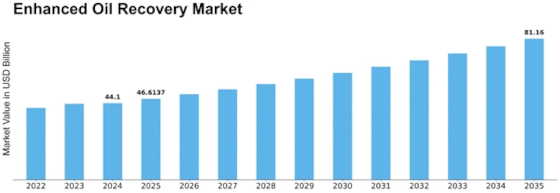

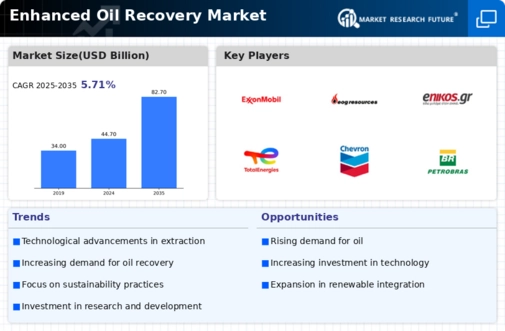
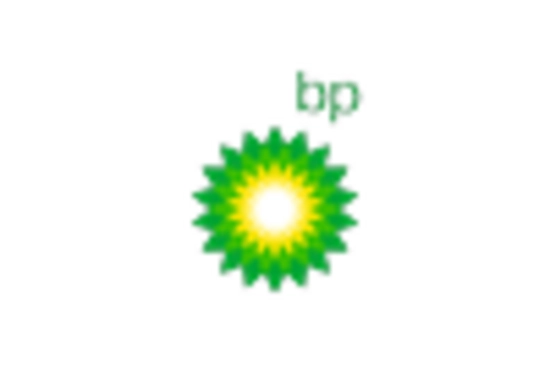
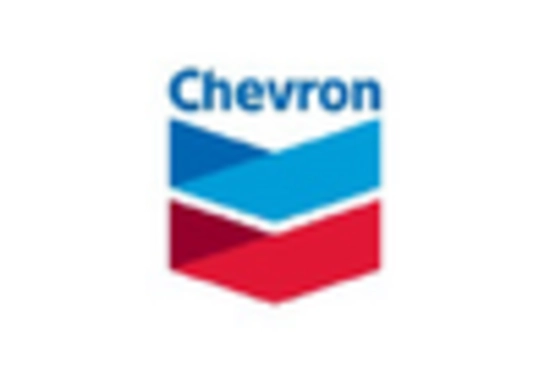
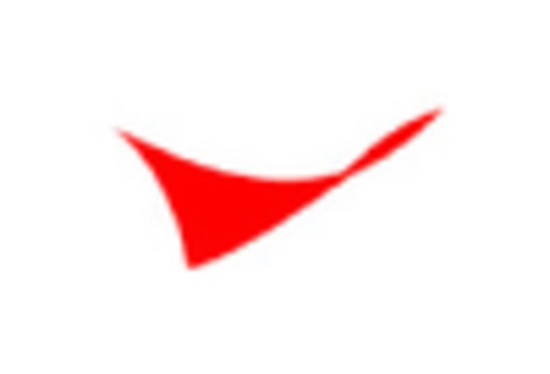

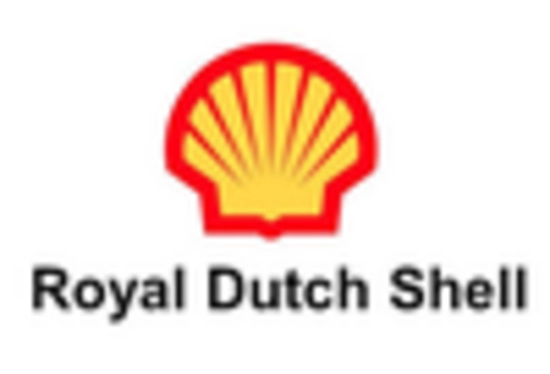


Leave a Comment